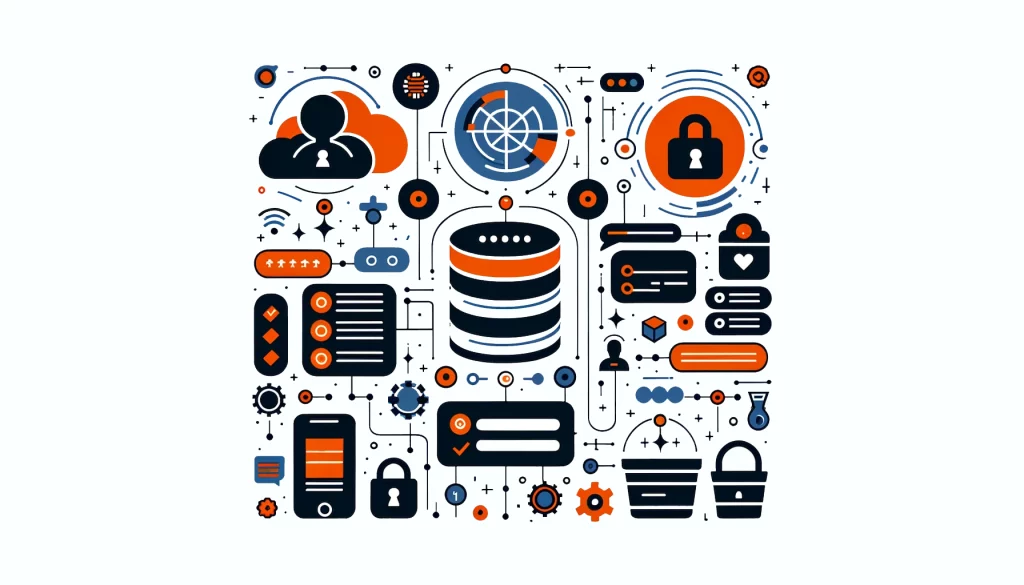
A Comprehensive Guide to Database Authentication in PostgreSQL

Database authentication is a critical aspect of data security. It ensures that only authorized users can access the sensitive information stored in a database. Without proper authentication, anyone could potentially view, modify, or delete data, leading to disastrous consequences for businesses and individuals alike.
The Role of Authentication in Database Security
Authentication acts as the first line of defense for your database. It verifies the identity of users before granting them access to the database. Strong authentication helps prevent unauthorized access and protects your data from falling into the wrong hands.
Imagine a scenario where a malicious actor gains access to your database without authentication. They could steal confidential information, manipulate data, or even wipe out entire tables. The consequences could be severe, ranging from financial losses to reputational damage.
Methods of Database Authentication
Several methods exist to authenticate users in a database. Let’s explore some of the most common ones.
Username and Password Authentication
The most basic form of database authentication is using a username and password combination. The database management system (DBMS) verifies the credentials provided by users. Access is granted if the provided credentials match the stored values.
Example:
CREATE USER 'john_doe'@'localhost' IDENTIFIED BY 'Str0ngP@ssw0rd';
While username and password authentication is simple to implement, it has some limitations. Attackers can guess, steal, or crack passwords, especially when users choose weak or easily guessable passwords.
Active Directory (AD) Authentication
Active Directory is a directory service developed by Microsoft. It allows you to authenticate database users using their existing AD credentials. This method is particularly useful in Windows-based environments where AD is already in use.
To enable AD authentication, you need to configure your DBMS to communicate with the Active Directory server. Once set up, users can log in to the database using their AD username and password.
Example:
Configuration in SQL Server: USE master; CREATE LOGIN [DOMAIN\username] FROM WINDOWS;
AD authentication simplifies user management by leveraging a centralized directory service. It reduces the need for separate database-specific credentials.
Lightweight Directory Access Protocol (LDAP) Authentication
LDAP is an open and cross-platform protocol for directory services authentication. It provides a standardized way to authenticate users against a directory service, such as OpenLDAP or Active Directory.
To use LDAP authentication, you need to configure your DBMS to connect to an LDAP server. Users can then authenticate using their LDAP credentials.
Example:
Configuration in MySQL: INSTALL PLUGIN authentication_ldap_sasl SONAME 'authentication_ldap_sasl.so'; CREATE USER 'john_doe'@'localhost' IDENTIFIED WITH authentication_ldap_sasl;
LDAP authentication allows for centralized user management across multiple systems and applications. A good choice when you have a diverse environment with different platforms and databases.
Single Sign-On (SSO) Authentication
Single Sign-On (SSO) allows users to access multiple apps and databases with a single set of login credentials. This means users only need to remember one username and password for all their accounts. SSO streamlines the login process and enhances security by reducing the need for multiple logins.
You can implement SSO authentication using protocols like Security Assertion Markup Language (SAML) or OpenID Connect (OIDC). When a user logs in to the SSO system, they are authenticated and granted access to the database based on their SSO credentials.
Example:
Configuration in Oracle Database: SSO_AUTHENTICATION_LEVEL = 2 SSO_AUTHENTICATION_TYPE = SINGLE_FACTOR_AUTH
SSO authentication provides a seamless and convenient user experience. It reduces the burden of managing multiple credentials and enhances security by centralizing authentication.
Implementing Strong Database Authentication
Now that we’ve explored different authentication methods, let’s discuss how to implement strong database authentication practices.
Choose a Secure Authentication Method
Select an authentication method that aligns with your security requirements and existing infrastructure. Consider factors such as the sensitivity of your data, the number of users, and the compatibility with your systems.
Enforce Strong Password Policies
If you opt for username and password authentication, enforce strong password policies. Require users to create passwords that are lengthy, complex, and unique. Implement password expiration and account lockout mechanisms to further enhance security.
Enable Encrypted Connections
Make sure the communication between clients and the database server is encrypted. Use secure protocols like SSL/TLS to protect sensitive data transmitted over the network. This prevents eavesdropping and man-in-the-middle attacks.
Implement Multi-Factor Authentication (MFA)
Strengthen your authentication process by implementing multi-factor authentication (MFA). Users must provide a second form of verification.
This can be a one-time password or biometric data. This is in addition to their password. MFA adds an extra layer of security and makes it harder for attackers to gain unauthorized access.
Regularly Audit and Monitor
Regularly audit your database authentication system to identify any weaknesses or anomalies. Monitor failed login attempts, unusual access patterns, and privileged user activities. Prompt investigation and corrective actions can help detect and prevent security breaches.
Keep Software Up to Date
Ensure that your DBMS and associated authentication plugins are up to date with the latest security patches and versions. Regularly apply updates and fixes to address known vulnerabilities and improve the overall security posture of your database.
The Benefits of Strong Database Authentication
Implementing strong database authentication offers several benefits:
- Enhanced Data Security: By verifying the identity of users, authentication helps prevent unauthorized access to sensitive data. It stops data breaches and only lets authorized people see, change, or delete information.
- Compliance with Regulations: Many industries have specific regulations and standards that mandate proper authentication measures for databases. By implementing strong authentication, you can demonstrate compliance with these requirements and avoid potential penalties.
- Improved User Accountability: Authentication helps establish user accountability by linking actions and data access to specific individuals. This aids in auditing, monitoring, and investigating security incidents.
- Increased User Trust: When users know that robust authentication mechanisms protect their data, it builds trust in the system. They feel more confident in sharing sensitive information, knowing that it will be secure.
Conclusion
Database authentication is a critical component of data security. It verifies the identity of users and ensures that only authorized individuals can access sensitive information. One way organizations can reduce unauthorized access and data breaches is by using strong authentication methods.
These methods include Active Directory, LDAP, and SSO. Organizations can lower the risk of security incidents by implementing these authentication methods.
When you set up database authentication, choose a secure method. Use strong passwords and enable encryption. Set up multi-factor authentication for added security. Keep the software updated to prevent security vulnerabilities.
By prioritizing database authentication, you can safeguard your data, maintain compliance, and build trust with your users. Don’t underestimate the importance of authentication in protecting your most valuable asset – your data.
